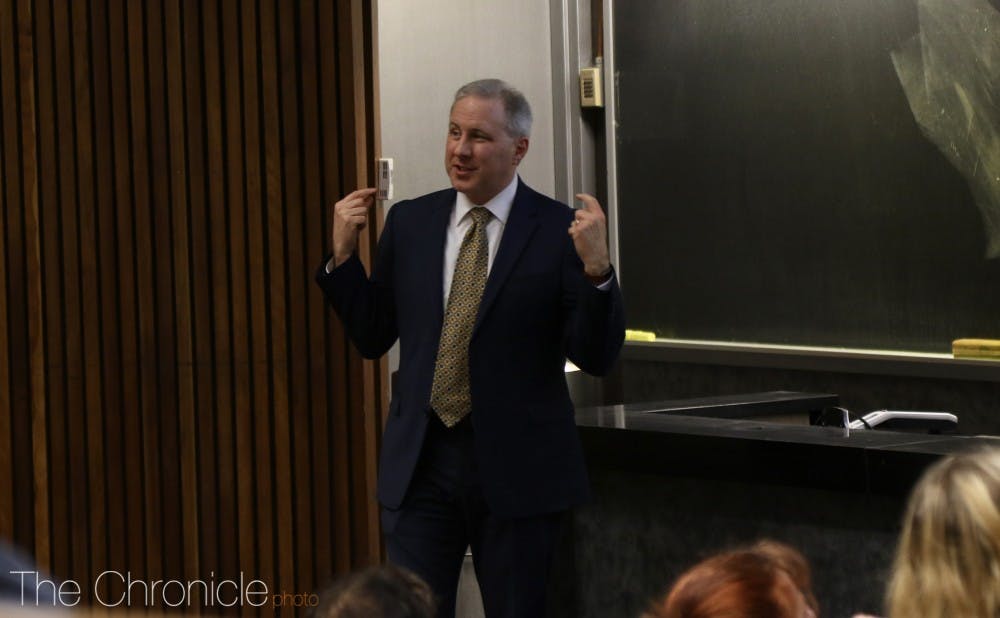The Duke Climate Coalition hosted a public forum on Thursday to discuss Duke's possible involvement in the Durham-Orange Light-Rail Project.
The light rail, an initiative of GoTriangle, would connect the University of North Carolina at Chapel Hill with Duke and North Carolina Central University in Durham.
The Durham-Orange Light-Rail Line, named for the two counties it will run through, would consist of a 17.7-mile line with at least 18 stations. Cooperation agreements need to be signed by Feb. 28 so that the project can apply for federal funding, which could cover half of the estimated total cost of around $2.5 billion.
“This cooperative agreement is by no means saying it is final or we can’t work more on the issue, just that Duke is going to commit to collaborating with GoTriangle," said junior Ariyani Challapalli, president of the Duke Climate Coalition. "Community members have been invested in this issue for a long time. If Duke wants to be a good community member it should be invested too."
Duke would need to donate land for the planned route to work.
The forum was open to the public and included three officials from Durham and Orange counties. The presenters gave information about their respective jurisdictions and why they supported the light rail.
Patrick McDonough, manager of planning and transit-oriented development for GoTriangle, discussed the public's interest in the project. He emphasized that the light rail would help people get to their jobs, citing a 2015 Harvard study linking commute time and poverty.
“The distance between Durham and Chapel Hill hasn't changed," McDonough said. "But they're getting a minute farther away each year."
UNC and Duke are among North Carolina's top employers. According to McDonough, with the two schools included on the line, the light rail would nearly double the number of people who could get to work in 45 minutes or less.
Housing was another major topic of the forum.
“We are going through an aggressive and progressive approach to public housing in the city of Durham,” said Anthony Scott, CEO of the Durham Housing Authority.
According to Scott, the DHA would build 2,066 new housing units within a 15-minute walk of the light rail, along with 300,000 square feet of retail space. The construction of these housing units would create jobs in the area as well.
“We’re working with low-income development to create an on-ramp so that the residents are ready and able to go to work,” Scott said.
Damon Seils, mayor pro tempore of Carrboro, said that the light rail would also lessen the Triangle area’s carbon footprint. In his 20 years at Duke, where he now serves as a communications specialist in the Duke Clinical Research Institute, Seils has come to depend on buses to get to campus to avoid driving on increasingly congested roads, he said.
Seils emphasized that he is in full support of the project and believes Duke should be too.
Attendees who spoke against the light rail mainly cited the project's cost, alternative routes, rising costs near stops and timeframe for the project as issues. Duke’s previously-cited concerns include vibration, noise and blocked access to Duke Hospital.
Get The Chronicle straight to your inbox
Signup for our weekly newsletter. Cancel at any time.

Maria Morrison was a digital strategy director for The Chronicle's 117th volume. She was previously managing editor for Volume 116.

